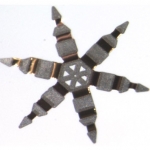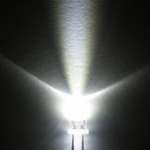Articles Archive for September 2010
METAL »

Generally speaking, architecture is kind of a big deal. What I mean is that architecture is large in size; it accomodates enormous objects like people, cars, eighteen-wheelers, and the occasional overfed cat. The Burj Khalifa in Dubai, for example, is 2,717 feet tall; that’s just over half a mile by my calculations. (I’ve seen entire hills shorter than the Burj Khalifa). But the thing about BIG things is that they tend to result from organized aggregation of small things. And so today I’d like to take a moment to explore the implications of the recent development of some really really ridiculously tiny …
Uncategorized »

Architects are visual people by and large, and we don’t like clutter or disorganization unless it’s a very carefully ordered chaos within acceptable parameters. (If you disagree with this broad generalization please feel free to express yourself with wild abandon in the comments section – it is the perfect forum for dissent). Anyhoozle, I’m bringing this up because a lot of the product data we look at when assessing different building materials that get specified for projects makes my head hurt. The brochures tend to be tacky, poorly organized, and …
FIRE »

Sometimes human beings want to go to outer-space, or into a volcano, or all the way to the bottom of the sea. The problem is that human beings are not particularly adapted to these environments, and without a lot of really intensive preparation and fancy gear, they will die spectacularly on arrival (if not before). Robots designed to survive in these horrible places can go in our stead, and send back useful information about conditions there. But it’s hard to create a robot that can survive adverse conditions and still respond to them like a human being …
FIRE, WATER »

Life is funny sometimes. Just yesterday I was talking to a coworker about this crazy book I’m reading that I may have mentioned in a previous post called The Singularity is Near by Ray Kurzweil, in which the author posits that we are moving towards a world where our technology and biology fuse to become indistinguishable, and now today I’m writing about solar cells powered by bioluminescent jellyfish. Let me also say that I’d much rather write about jellyfish than swim with them; they navigate the sea in creepy pulsing motions and some of them …
FIRE »

It’s hard to compete with the luminous output of a ball of hydrogen and helium gas 864300 miles in diameter, but it should be noted that sunlight is not without its drawbacks. It’s nearly impossible to use at night, and the quality of light is affected by everything from cloud cover to latitude. Fire works indoors and at night for light, but it’s not very bright, often rather smoky, and could potentially rage out of control and destroy one’s house. Incandescent light bulbs use too much electricity and put out a kind of yellow …







